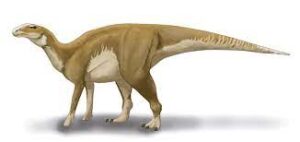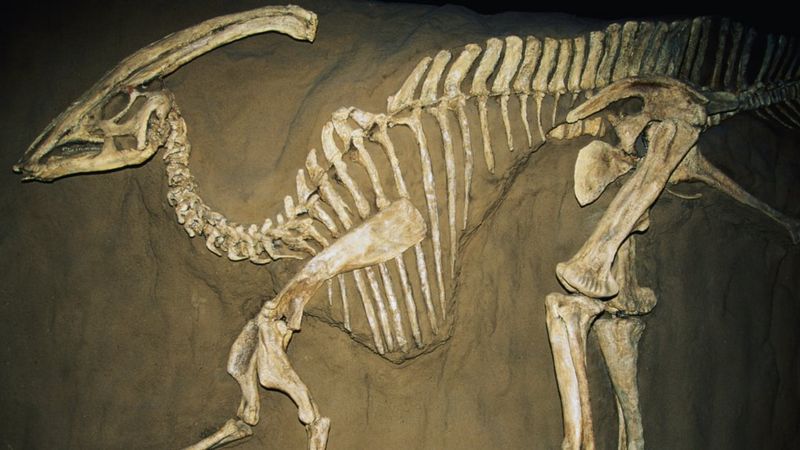Instruções:
Essas aulas de inglês são para alunos intermediários e avançados de inglês como segunda língua. Eles incluem “Ler”, “Ouvir” e “Escrever”. Basta seguir a lição respondendo às perguntas à medida que as encontra. Todas as vagas em negrito devem ser traduzidas para seu próprio idioma para ajudar na compreensão do novo vocabulário.
Section One (reading & vocabulary)
Scientists in Canada believe they may have found a rare complete dinosaur skeleton!
The fossil was discovered sticking out of a hillside in Dinosaur Provincial Park in Alberta, Canada, and scientists think it could be a complete hadrosaur. 
The find is a big deal as complete skeletons are extremely rare.
If the fossil is proven to be one, it will provide lots of information about what the dinosaur would have looked like when it was alive.
Section Two (listening quiz)
Watch the five minute video about the Jurasic Park movie and answer the five questions below:
- What was the name of the studios that were working on the special effects in the movie?
- Who wrote the original book before the movies were produced?
- How many species were in his original book?
- Which dinosuar can be seen chasing the herd of hadrosuars in the movie?
- What is the name of the studio’s Facebook page?
- Which dinosaur replaced the hadrosaur in the movie?
The Jurasic Park chase scene
Section Three
The fossil is only partly exposed at the moment, with its tail and right hind foot in view. The exposed skeleton is also covered in fossilised skin.
The scientists working to remove the skeleton from the hill believe there could be more to find.
“This is a very exciting discovery and we hope to complete the excavation over the next two field seasons,” said Dr Brian Pickles from the University of Reading in the UK .
“Based on the small size of the tail and foot, this is likely to be a juvenile.
“Although adult duck-billed dinosaurs are well represented in the fossil record, younger animals are far less common.
“This means the find could help palaeontologists to understand how hadrosaurs grew and developed.”
Section Four
Why is this such an important discovery?
Although hadrosaur fossils aren’t uncommon, whole ones with preserved skin are extremely rare!
“Hadrosaur fossils are relatively common in this part of the world but another thing that makes this find unique is the fact that large areas of the exposed skeleton are covered in fossilised skin,” Dr Caleb Brown from the Royal Tyrrell Museum said.
“This suggests that there may be even more preserved skin within the rock, which can give us further insight into what the hadrosaur looked like.”
The hope is to extract the whole specimen for research and eventually to display. However, based on the size and preservation of the fossil, this process could take several years.
It will take a few months to collect the whole of the skeleton. Once this is done, it’ll be taken to the Royal Tyrrell Museum’s Preparation Lab where technicians will work to uncover the fossil.
Researchers will then be able to see how well-preserved it is and whether the entire skeleton is there.
Section Five
What was the hadrosaur like?
Hadrosaurs are known to have been large duck-bill dinosaurs which ate plants.
Researchers working on this project won’t know for sure the exact species of hadrosaur unless a skull is found.
The University of Reading in the UK and the University of New England in Australia are working closely with Royal Tyrrell Museum in Canada to collect the rest of the skeleton.
QUESTIONS: (speaking)
Do a little research in English to find the names of three more dinosuars in English.
WRITING EXERCISE: (word count 100)
What does the phrase “duck-billed” mean? Do a little research on Google and find as many duck-billed creatures alive today as you can and where they can be found. Write a short paragraph describing two of them. (two paragraphs). Fifty words for each paragraph. Your paragraphs should include the following information:
- The name of the creature.
- Where the creature lives or can be found?
- How does this creature multiply in nature?

